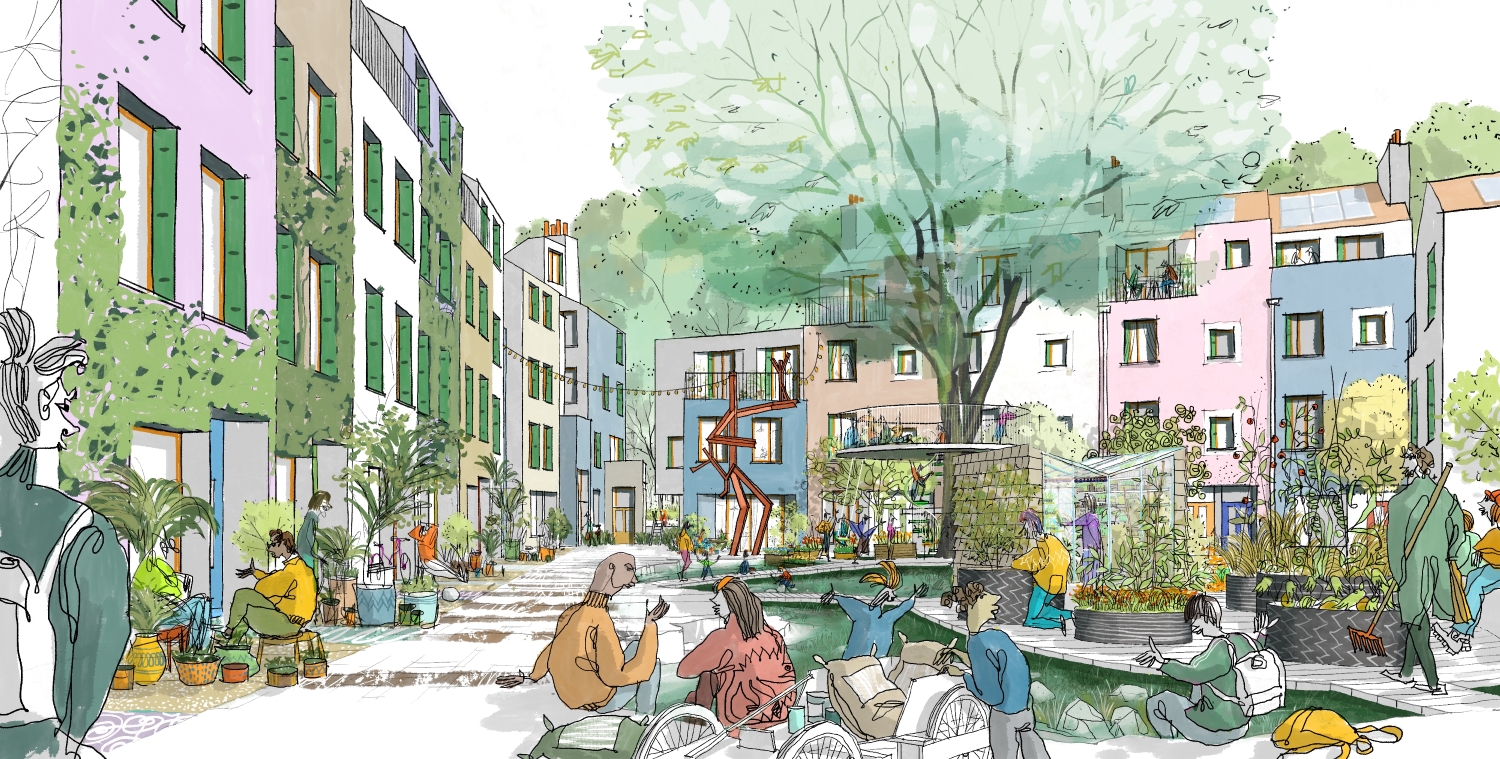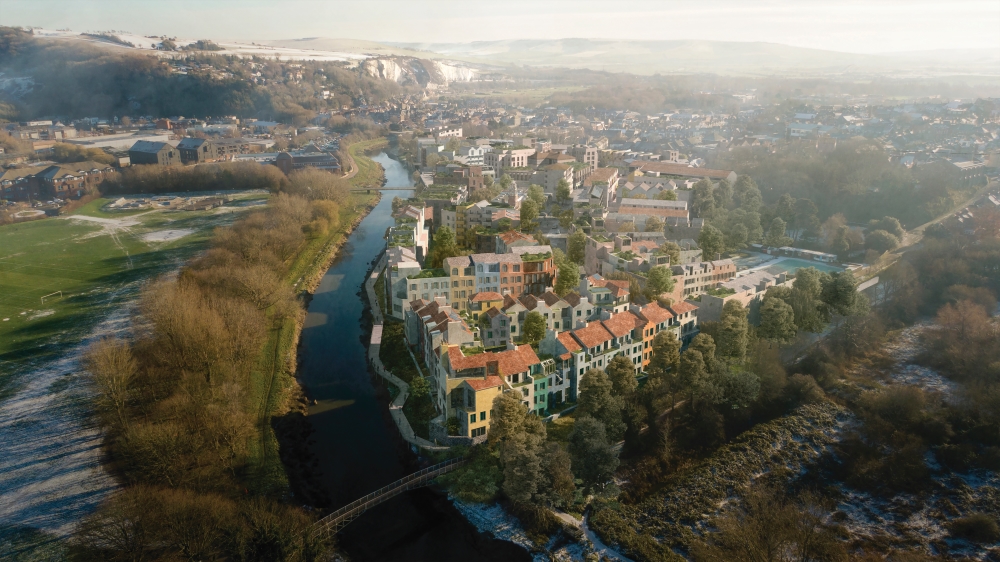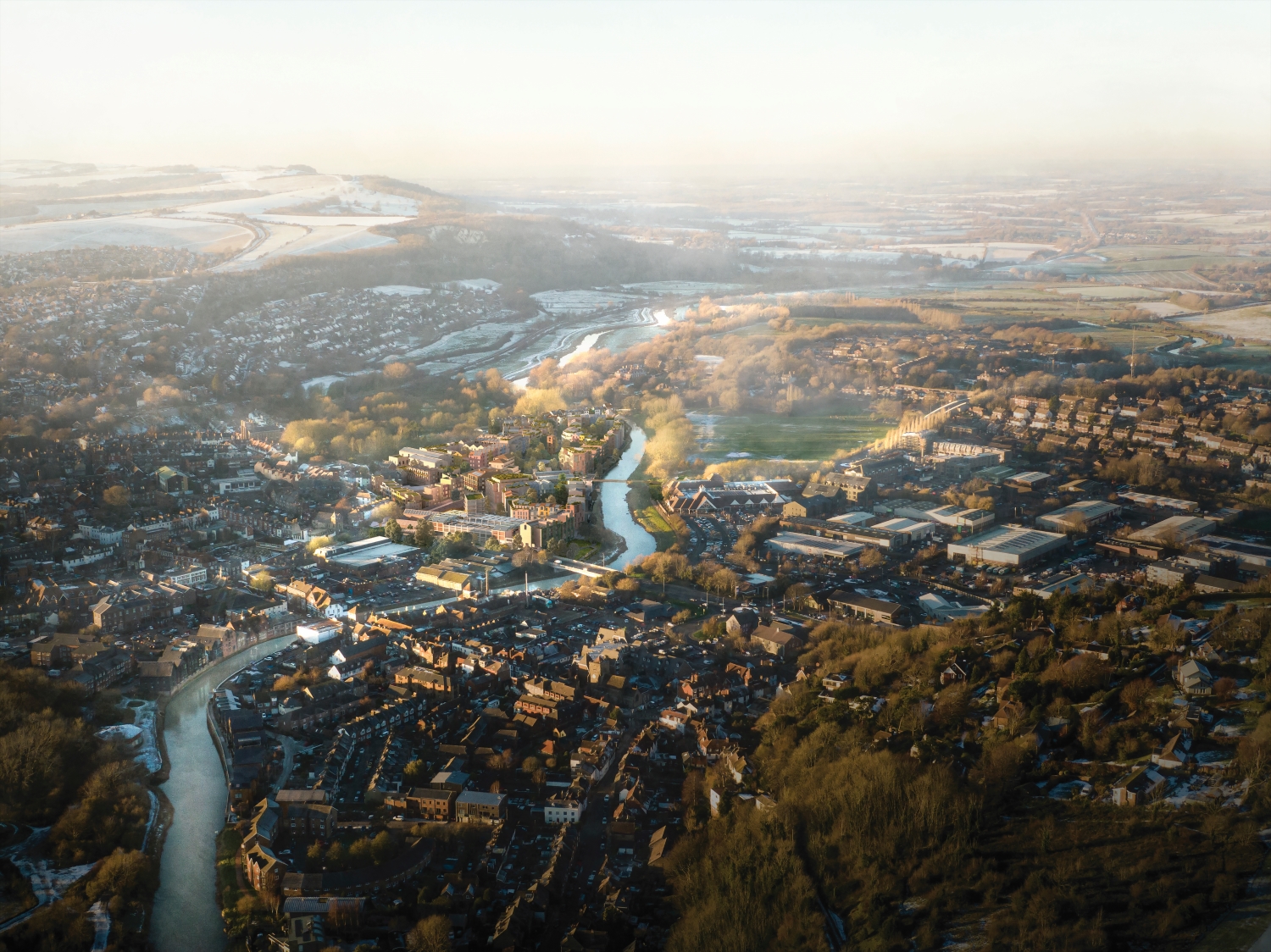The Phoenix, a low-car ‘gentle density’ development in East Sussex, presents a radical alternative to most development, but remains rooted in place, writes Human Nature’s Anthony Pearce
At the pen of the visiting writer, places are often reduced to their most immediate and famous elements, creating imaginary neatness and homogeneity. In the case of Lewes, you’ll read of its Georgian High Street and Norman Castle, and the views to the South Downs that both provide. But the unique charm of the East Sussex town has much to do with its variety, its juxtaposition of architectural styles and materials, the result of organic growth over centuries. Look around and you’ll see Victorian, Edwardian, industrial and modern styles nestled together on Medieval streets; flint walls, mathematical and hanging titles, and grey bricks, which glisten in the setting and rising sun.
This richness in design extends to active and decorative frontages; recessed and paired entrances and the widespread adaptation of street-side private, semi-private and public space. These planters, pots and benches, arranged by homeowners, shopkeepers and publicans, make fine use of the town’s narrow streets – giving it an intimate, lively and lived-in appearance. Benches and other seating give opportunities to pause, increasing tenfold the chances of bumping into someone you know; the town – as hilly as it is – is best enjoyed on foot, particularly through its narrow Medieval passages called twittens.
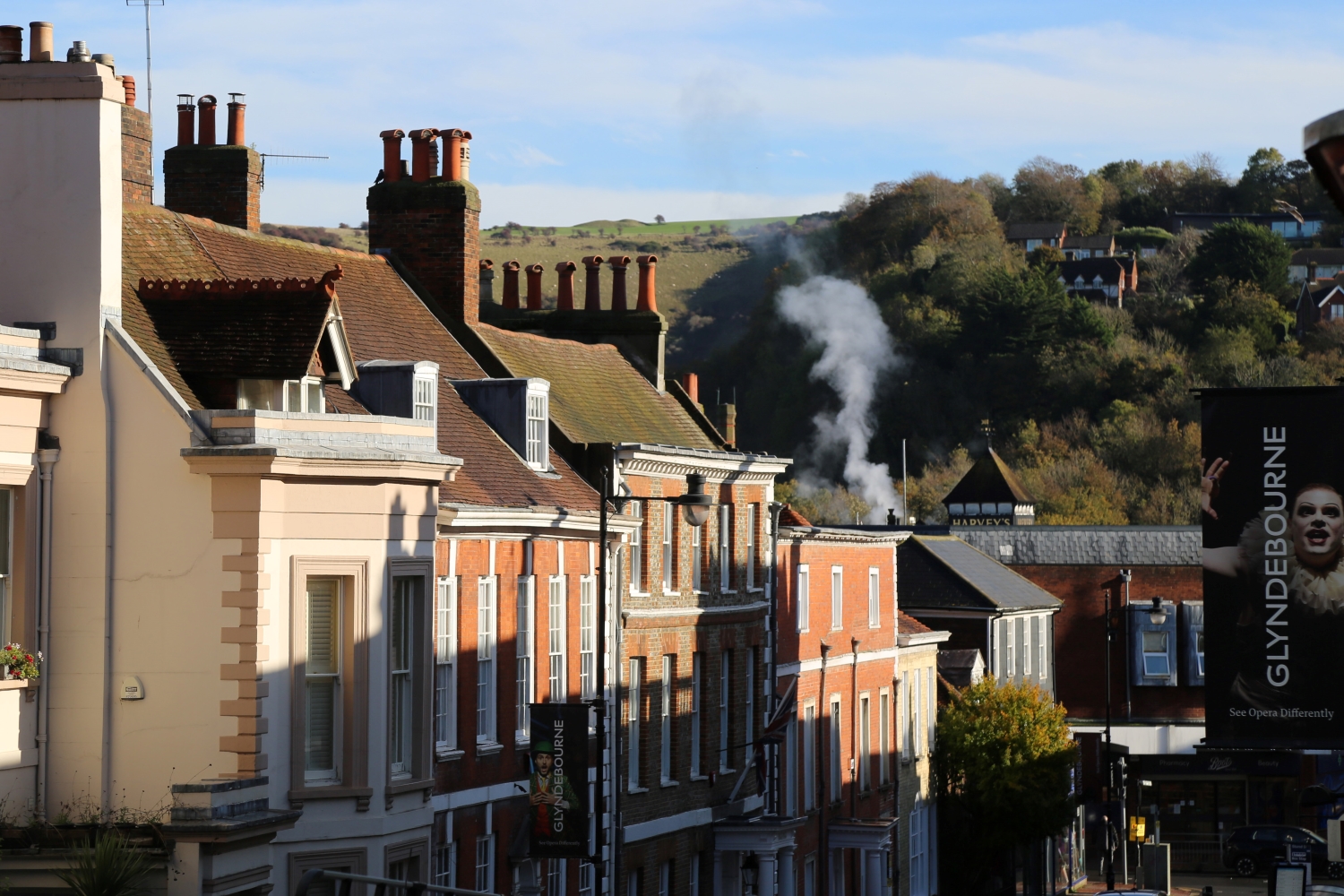
We see this as ‘elegance, wit and imperfection’: three key ingredients in the creation of beautiful new places, as identified in our ‘blueprint principles’ for the Phoenix, our flagship project in the town. Back in 2020, before work on the neighbourhood’s design, layout and purpose, we wrote: “In streets, elegance comes from a coherent urban form with a clear hierarchy of foreground and background buildings of human scale. But facades should embrace idiosyncrasies, colour, texture and variety – artistic and individual expressions of designers and residents who adapt their own neighbourhood.” This work has continued with the Design Code, submitted with the outline application for the project in February 2023, which sets rules for future design and identifies out a series of Golden Threads – emblematic elements of the town that can be adapted into the new design of the neighbourhood.
A place, of course, is more than just its built fabric. Lewes is a proudly rebellious town that embodies the Sussex slogan, ‘we wunt be druv’. This spirit of dissent is often linked back to Thomas Paine, who wrote revolutionary pamphlets while living in the town. It is encapsulated by the raucous Bonfire celebrations, which dominates so much for the cultural calendar year-round; the fan-owned Lewes FC, the first club in the world to pay parity between its men and women’s team; and its adoption of green politics, as one of the first Transition Towns to the most recent Town and District elections.
This rebelliousness has also manifested in boycott, protest and demonstration: from the campaign to stop a relief road carving up the town in the 60s (which the town won) to a boycott of a local pub, after a new brewery said it would stop serving beer from the town’s beloved Harveys (which the town also won). Most famous is the work of Phoenix Rising, a campaign group which opposed a run-of-the-mill development here on the Phoenix Industrial Estate, which at the time played host to a community of artists and makers. The group weren’t just oppositional, they were propositional, calling for more sustainable development, the adaptation of historic industrial structures dating from the John Every Ironworks, and sufficient creative space. They produced a new and superior masterplan and arranged a debate at the town hall, hosted by David Dimbleby no less. This time the town lost the battle; but although the scheme was approved in 2016, it was never built.
Lewes then has mostly avoided bad development in the way other towns, particularly at their edges have not. But at the same time, the town has failed to meet housing need – not just for the 500 on the District-wide social housing list – but for many others hoping to stay in the town. This is not without its consequences: the average age is higher and is increasing faster than the national average. With the working age population falling, three schools have closed in recent years, with pressure felt by shops on the High Street. I hear from young families who want to stay in Lewes but are unable to find their next home as their families grow.
Twenty years since the site was first earmarked for redevelopment, following failed attempts, fire and flood, new life is soon to be brought back to this brownfield site. The Phoenix has been designed to take influence from the built fabric of the town, in ways that respond to the challenges of the 21st century – an age of car dominance and the crises in climate and the natural world – while responding to the town’s social, historical and economic context, including that of the site itself: once a productive ironworks, later a cultural centre.
It’s a difficult site – a floodplain brownfield with numerous challenges and sky-high costs associated with planning conditions – but its potential is striking: 7.9 hectares of underutilised land, 600m of river frontage, views of the Downs, just three minutes’ walk from the High Street, and 15 from the train station (with direct connections to London and Brighton). This is the sort of site you imagine when you hear ‘brownfield first’: not only should it be redeveloped, but redeveloped wisely – meeting housing need, creating local jobs and training opportunities, and promoting more sustainable ways of living.
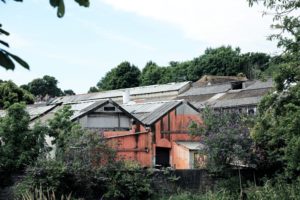
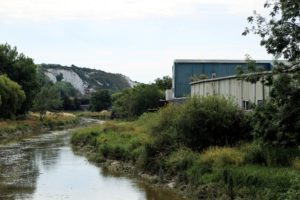
First and foremost, this means building at an appropriate density for an edge-of-town development. The previous consent was for 416 homes; the Phoenix is made up of 685 homes, mostly one, two and three-bedroom apartments. These homes will be in buildings ranging from three to five storeys (with occasional pop-ups) around beautiful, green courtyards, promoting the sharing of spaces, amenities and resources. These buildings and the spaces between will be designed by some of the UK’s most talented architects and urban designers, including Adam Richards, Archio, Ash Sakua, Charles Holland, Mae, Material Cultures, Mole and Periscope, and Human Nature’s in-house Sustainable Construction & Design teams.
In addition to good homes (including 155 at affordable rent and 50 designated as First Homes), the neighbourhood will provide co-working and makers’ spaces, a river walk, flood defences and health centre. At the heart of the neighbourhood will be a series of public squares connecting to a community canteen (with affordable seasonal food), event hall, taproom, fitness centre, much of which will be housed within repurposed industrial structures.
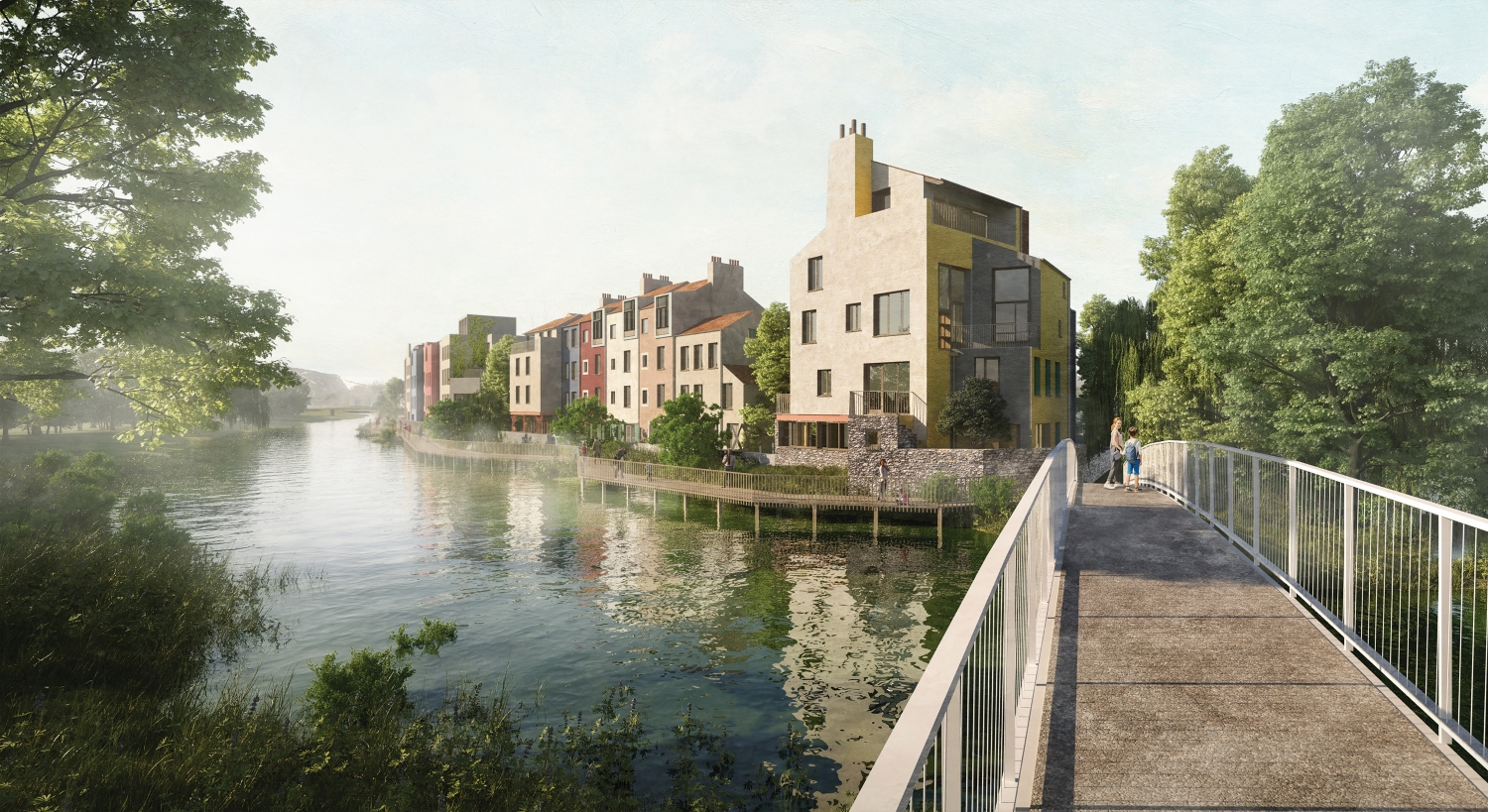
The plans received planning approval subject to s106 agreements and the resolution of outstanding issues with National Highways at a planning committee in February. The neighbourhood has been shaped by the community, not just through formal consultation, exhibitions and workshops but cultural ‘meanwhile’ events with local groups and businesses – offering a glimpse into what this neighbourhood will be.
The enthusiasm, support and knowledge of those in the town has allowed us to shape and refine these plans, proposing something that is now understood and supported by many in the community. Of those who responded to the public consultation, two-thirds of those with Lewes addresses wrote in support. But engagement is not just a means of getting a project over line, but a way of building connections to the town, strengthening and widening local circular economies.
We see the Phoenix, then, as an opportunity to prove that there is a different, more sustainable and more impactful way of making places – an alternative to the type of development that is so often brought forward in this country. The Phoenix is, in many ways, a bold undertaking but many of the components that make it up have been embraced elsewhere; for example, building in timber, courtyard blocks and the reuse of existing materials – our innovation is doing it all in one place. But it’s our mobility strategy that is considered most radical – and given our society’s deep dependence on cars – the most controversial.
The Phoenix has been designed in a way that means most of its residents won’t need to own a private car – space traditionally used for private driveways will instead be put to communal use: shared courtyards, playgrounds and rain gardens. Largely, this will be achieved in three ways: by providing mostly daily needs within a short walk or cycle (either in the neighbourhood or the wider town); maximising connectivity to the rest of Lewes, through cycle and walking routes; and providing convenient and affordable mobility services.
The Co-Mobility Hub, therefore, is the most important building on the Phoenix, channelling vehicles to the southern tip of the neighbourhood, creating streets safe for walking, wheeling, cycling and for children playing. The Hub will contain parking spaces, an electric car hire and club, electric bike service and a ‘last-mile’ freight facility – carrying goods into the neighbourhood. Services such as car hire will be operated by an app or in person, allowing residents to book vehicles whenever needed.
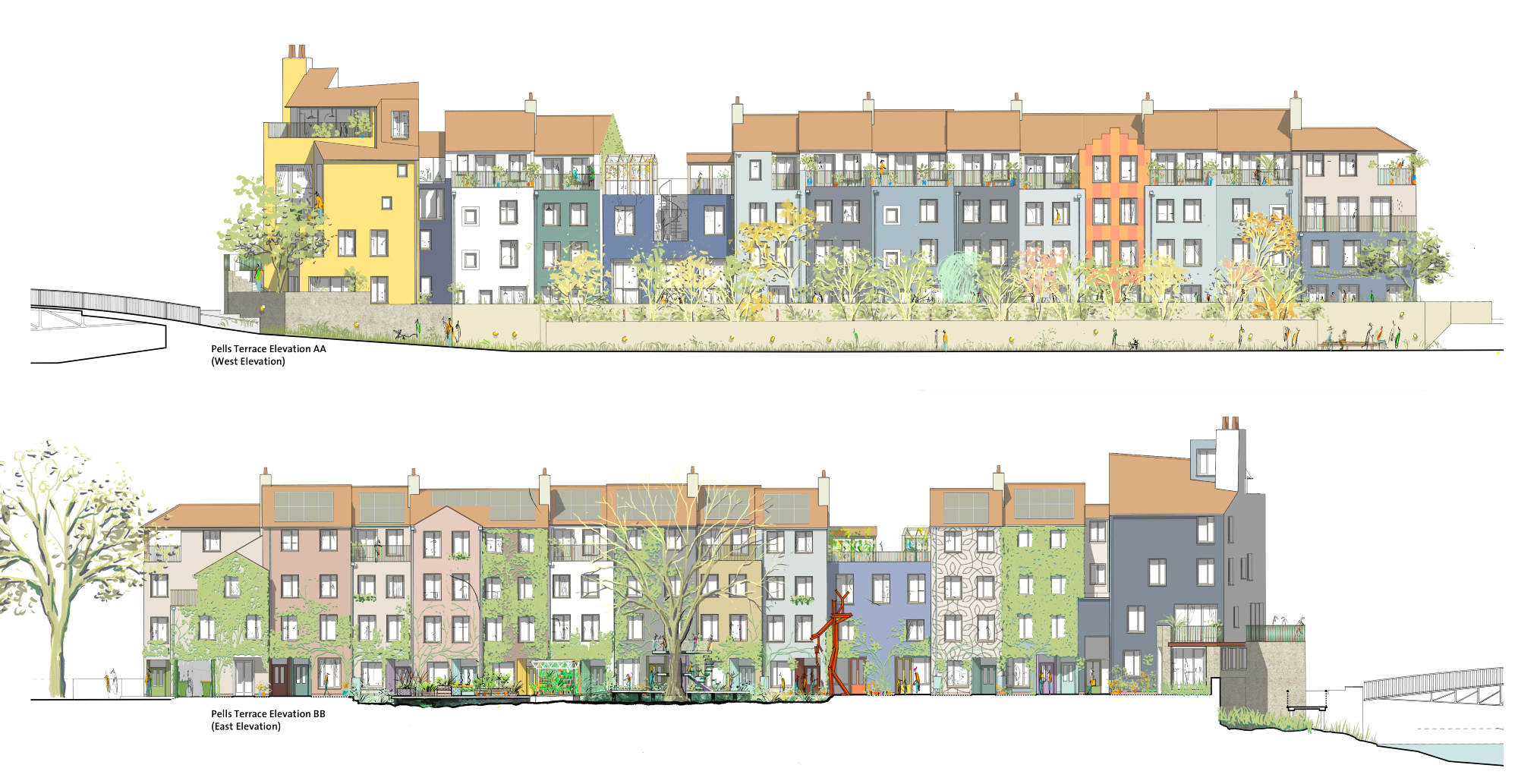
Many people need access to a car, occasionally or even regularly, but car ownership isn’t always necessary – after all, the average car or van in England is driven just 4% of the time. There is an existing solution to this: the charity CoMoUK has found that each car club vehicle in the UK is replacing 20 private cars – there will be 45 to hire on the Phoenix.
Furthermore, households in areas with fewer parking spaces and where there is good access to public transport are already less likely to own a car: the 2021 Census shows that in parts of central Lewes more than 45% of households don’t own a vehicle. Add mobility services to this and a ‘modal shift’ is easily achievable.
The Phoenix may be ahead of the curve in this sense, but this is undeniably the direction of travel (pun intended) in transport policy. The imperatives for this are clear: cars are one of the great drivers of climate change, polluting our air and have redefined our public realm for the worse, making our streets dangerous for children. As the Royal College of Paediatrics and Child Health recently put it: “traffic-dominated neighbourhoods and low quality housing layouts … with a lack of parks and green spaces and other accessible high quality natural spaces, have harmed children’s health, and undermined their quality of life.” With the Phoenix, we hope to point the way – inspired by Lewes’ radical spirit.
